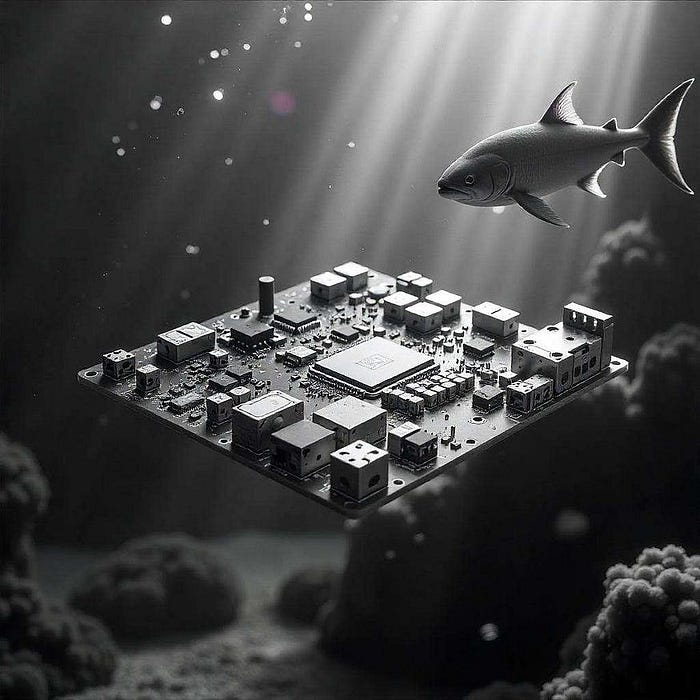The Power of Smart Electronics in Autonomous Ocean Robotics
 Auckam
Auckam
Smart electronics are the driving force behind the autonomy of modern ocean robotics, enabling these machines to operate independently, navigate complex underwater environments, and collect valuable data without human intervention. Whether used for scientific research, environmental monitoring, or offshore industrial applications, the integration of advanced electronics is what makes ocean robots truly autonomous and effective.
If you’re searching for how smart electronics empower autonomy in ocean robotics, this article provides a clear answer and explains the technology shaping the future of underwater exploration.
Why Smart Electronics Are Crucial for Ocean Robotics Autonomy
Ocean robotics face extreme challenges: pressure, corrosion, limited communication, and unpredictable environments. To perform tasks autonomously, these robots require:
Robust and reliable electronics that can withstand harsh ocean conditions
Advanced sensors and data processing to understand surroundings
Efficient power management for extended missions
Onboard intelligence to make decisions without human control
Smart electronics form the backbone of these capabilities. Without sophisticated electronics, ocean robots cannot navigate autonomously, avoid obstacles, or adapt to changing conditions underwater.
Core Smart Electronics Components in Autonomous Ocean Robots
1. Embedded Processors and Control Systems
These are the brain of the robot, running complex algorithms that process sensor inputs and execute control commands in real time.
2. Sensor Arrays
Ocean robots use an array of sensors such as:
Sonar for mapping and obstacle detection
Pressure sensors to monitor depth
Chemical sensors for water quality analysis
Cameras and LIDAR for visual navigation
Smart electronics handle sensor fusion — combining data streams to form a coherent understanding of the environment.
3. Power Management Systems
Batteries must last for hours or days at sea. Electronics manage energy consumption and optimize power delivery to critical components.
4. Communication Modules
Due to limited underwater communication, electronics enable surface relay or satellite uplinks when possible, and manage data storage for delayed transmission.

How Smart Electronics Enable True Autonomy
Autonomous Navigation and Obstacle Avoidance
Using sensor data, processors make split-second decisions to steer robots safely through complex underwater terrain — reefs, wrecks, or industrial structures.
Mission Adaptability
Electronics allow dynamic mission adjustments, such as changing sampling locations based on water chemistry or avoiding unexpected hazards.
Data Collection and Analysis
Smart electronics process data locally to reduce communication load, only transmitting the most critical information back to operators.
Self-Diagnostics and Fault Management
Autonomous systems monitor their own health, diagnosing issues and adjusting operation to prevent failures.
Applications of Autonomous Ocean Robotics Powered by Smart Electronics
Environmental Monitoring: Tracking pollution, marine life, and climate-related changes
Oil and Gas Inspection: Autonomous inspections of underwater pipelines and rigs
Scientific Exploration: Mapping ocean floors and studying ecosystems in inaccessible areas
Defense and Security: Surveillance and mine detection missions
In all cases, smart electronics enable robots to work safely and effectively without continuous human oversight.
Challenges in Designing Smart Electronics for Ocean Robotics
Harsh Conditions: Electronics must resist pressure, corrosion, and moisture ingress
Limited Communication: Designing systems for intermittent or low-bandwidth data transfer
Energy Efficiency: Balancing high-performance computing with long battery life
Miniaturization: Fitting powerful electronics into compact, hydrodynamic housings
Innovations in materials, packaging, and circuit design continue to overcome these hurdles.
The Future: Smarter, Longer-Lasting, and More Capable Ocean Robots
Emerging trends include:
AI-powered onboard decision-making for even greater autonomy
Energy harvesting systems that extend mission durations using ocean currents or thermal gradients
Advanced sensor fusion improving environmental awareness
Modular electronics allowing rapid upgrades and repairs
These advances promise to expand the capabilities and applications of autonomous
Conclusion
The power of smart electronics lies at the heart of autonomous ocean robotics, enabling these machines to explore, monitor, and operate independently in some of Earth’s most challenging environments. By integrating advanced processing, sensor fusion, and efficient power management, smart electronics unlock the true potential of autonomy beneath the waves.
For researchers, engineers, and industry leaders, investing in smart electronics design is essential to pushing the boundaries of ocean robotics and unlocking new possibilities in underwater exploration and operations.
Subscribe to my newsletter
Read articles from Auckam directly inside your inbox. Subscribe to the newsletter, and don't miss out.
Written by
